What is a thermal fuse?
Thermal fuse ( Thermal cutoff ) function and selection?
A thermal fuse is used to switch off a circuit in the event of excess temperature. In contrast to an electrical fuse, tripping is not primarily influenced by the current flowing through it, but by its temperature.Thermal fuse basics
Thermal fuses are therefore located close to or in the components to be monitored. These can be windings of electric motors or transformers that need to be protected, or cooking appliances, hot plates or coffee machines that require protection against fire.A distinction is made between resetting and non-resetting or irreversibly triggered thermal fuses.
Thermal fuse between the windings in the stator of an electric motor
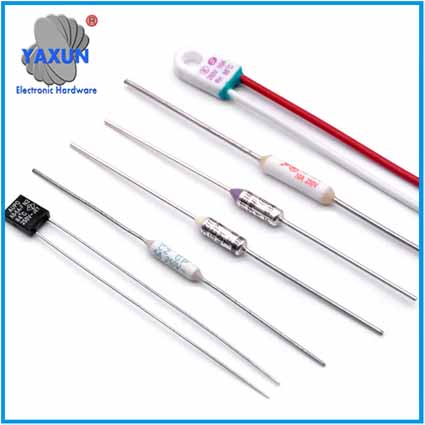 |
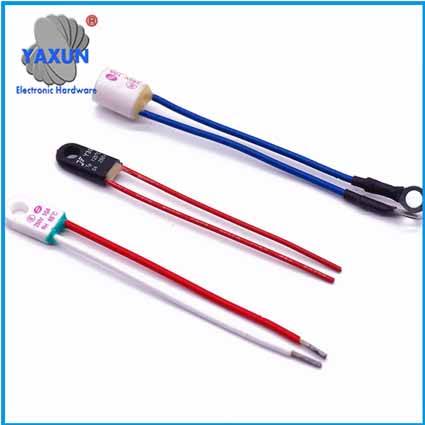 |
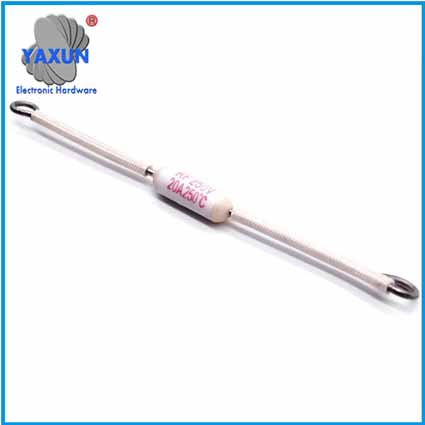 |
| Thermal fuse | Thermal cutoff | Ceramic thermal fuse |
Thermal fuses application
Thermal fuses or thermal fuses are used for the safe and one-time shutdown (disconnection) of electrical circuits if the permissible operating temperature is exceeded.Frequent applications are in transformers, power supply units, heating elements, electric motors, solenoid valves, fans, water heaters, ballasts, alarm systems, electronic circuits, power transistors and many more.
Important parameters
Rated switching temperature TfSwitching temperature at which the thermal fuse switched off under specified conditions. The Tf has no positive tolerance (EN 60691).
Fusing Temp.
The trigger temperature indicates the temperature at which the fusible alloy in the thermal fuse begins to melt.
When selecting a suitable thermal fuse, the tripping temperature is less relevant compared to the rated switching temperature (Tf).
Holding temperature Th
The highest temperature at which the thermal fuse does not change the switching state. If the holding temperature is reached repeatedly, the fuse can be damaged and trigger prematurely.
Maximum limit temperature Tm
Above the Tm, the temperature fuse can be completely destroyed and contact again if necessary.
Rated current Ir
The rated current indicates the maximum current that the thermal fuse can safely switch.
Transient overload current Ip
The Ip indicates the maximum pulse current that the thermal fuse can withstand without damage.
Rated voltage Ur
The rated voltage indicates the maximum voltage that the thermal fuse can safely switch.
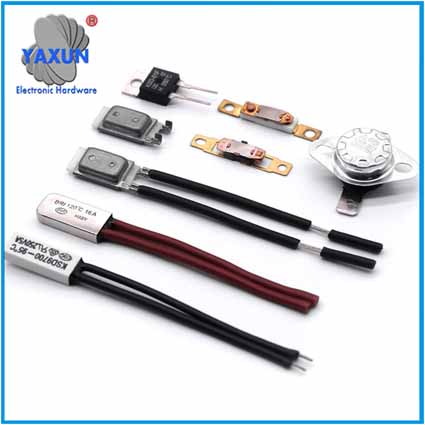 |
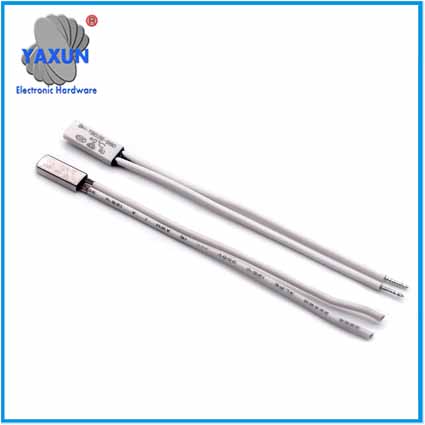 |
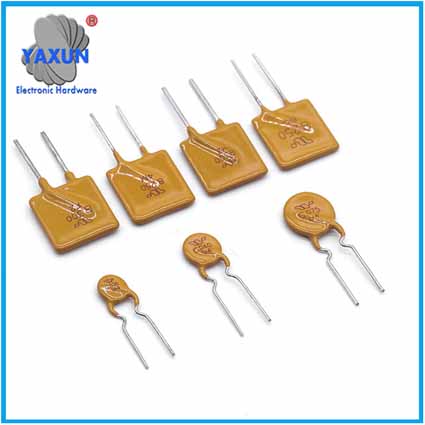 |
| Resettable thermal cut-off switch | Resettable miniature thermal cutoff | Resettable thermal cut-off PTC resistor |
Thermal fuses that are not self-resetting
Non-resettable typeIrreversible thermal fuses are implemented with an electrical connection via a metal (e.g. Wood metal) that melts at a defined temperature. The solder joint must open when it melts, which is achieved by a spring. Such components often have the shape of a sheet metal tab soldered on one side, the tab being the spring at the same time (e.g. on electrical resistors with overload cut-off). Another design are the Radial components used in coffee machines and irons that are completely enclosed. They are similar to a semiconductor diode, which is why they are sometimes confused with. Another design are flat, wired components that are suitable for being housed in a wire winding (motors, small transformers, etc. in plug-in power supplies and for low-voltage halogen lamps).
Manually resettable type
These thermal fuses are similar to bimetal switches, but can only be switched on again with a button after they have cooled down.
Self-resetting thermal fuses
Self-resetting thermal fuses close the circuit again after cooling down. They can be implemented as a bimetal switch (see also Klixon) or with a PTC resistor.
PTC thermal switches also react to the current flowing through them, which inter alia. is quite desirable when protecting transformer windings. They are therefore a combination of a thermal fuse and an overcurrent switch.
PTC resistors housed in windings for temperature monitoring only switch the circuit on again after it has been interrupted for a while, as their residual heat means that they still have a higher resistance even when switched off.
The high resistance in the hot state leads to continued heating of the component even after the overload or cooling of the winding has been eliminated and thus to a continuous interruption of the circuit - only a small current flows that keeps the component warm.





